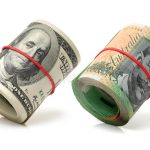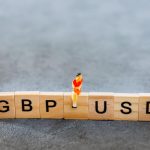Gold price drew some Buyers as the US dollar fell.
During the Asian session on Monday, the gold price (XAUUSD) reversed its two-day losing run. The weaker than expected US job figures have increased the likelihood of a September rate cut by the US Federal Reserve. This, in turn, has pushed the US Dollar (USD) down while lifting USD denominated gold. It is worth noting that a lower interest rate reduces the opportunity cost of investing in gold, resulting in increased demand and price.
The lessening of Middle East tensions and the risk-on mentality may limit gold’s gains.
On the other hand, the lessening of geopolitical tensions in the Middle East. Particularly the Iran Israel dispute, and the risk-on atmosphere may reduce demand for safe-haven assets, limiting the yellow metal’s upside.
The rising assumption that the Fed will begin reducing interest rates later this year boosted the yellow metal.
This week, gold dealers will be paying close attention to Fed talk. Fed officials Thomas Barkin and John Williams are scheduled to appear on Monday. The Fed’s dovish message may further strengthen the XAUUSD.
Daily Market Movers: Gold price recovers some lost ground amid disappointing US statistics.
The US Nonfarm Payrolls (NFP) increased by 175K in April from 315K in March (revised from 303K). Falling short of the market forecast of 243K.
In April, the unemployment rate increased to 3.9% from 3.8% in the previous reading. While average hourly earnings decreased to In April, the YoY increase was 3.9%, up from 4.1% in March.
The US ISM Services PMI fell into contractionary territory in April. Dropping from 51.4 in March to 49.4, below the market estimate of 52.0.
Fed Governor Michelle Bowman warned that there is a real chance that inflation may continue high for much longer than many predict, and that she is prepared to raise interest rates if inflation pauses or reverses.
Chicago Fed President Austan Goolsbee noted that the latest US employment report was strong, highlighting that present monetary policy is restrictive.
Fed easing expectations have shifted, with the probability of a September rate decrease increasing to over 90%, up from 55% before the NFP report, according to CME FedWatch.









